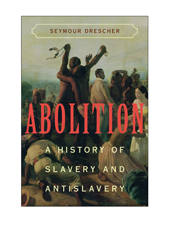Book contents
- Frontmatter
- Contents
- Preface
- PART ONE EXTENSION
- PART TWO CRISIS
- PART THREE CONTRACTION
- 9 British Emancipation
- 10 From Colonial Emancipation to Global Abolition
- 11 The End of Slavery in Anglo-America
- 12 Abolishing New World Slavery – Latin America
- 13 Emancipation in the Old World, 1880s–1920s
- PART FOUR REVERSION
- Index
- References
11 - The End of Slavery in Anglo-America
Published online by Cambridge University Press: 04 August 2010
- Frontmatter
- Contents
- Preface
- PART ONE EXTENSION
- PART TWO CRISIS
- PART THREE CONTRACTION
- 9 British Emancipation
- 10 From Colonial Emancipation to Global Abolition
- 11 The End of Slavery in Anglo-America
- 12 Abolishing New World Slavery – Latin America
- 13 Emancipation in the Old World, 1880s–1920s
- PART FOUR REVERSION
- Index
- References
Summary
Abolitionism Emerges in U.S. Civil Society
At the beginning of the 1830s, the constitutional pact excluding slavery from the American national agenda still looked ironclad. But, in January 1830, an extended debate in the U.S. Senate pitted Daniel Webster of Massachusetts against Robert Y. Hayne of South Carolina. The Northerner's “Second Reply to Hayne” would be recited for generations as the most eloquent speech ever delivered in Congress: “Liberty and Union, now and forever, one and inseparable.” The Senator's liberty was quite separable, however, as it applied to the institution of slavery, and faithfully reaffirmed its circumscribed limits. In his speech, the Massachusetts senator repeated, line for line, the very first Congress's resolution renouncing any authority over slaves in any of the states of the Union. Webster reaffirmed its pristine vow: “[F]rom that day to this…No Northern gentleman, to my knowledge, had moved any such question in either House of Congress.” None had, ever since 1790, proposed any legislation or resolutions inconsistent with that principle. Nor would Webster himself intrude beyond the line: “It is the original bargain – the compact – let it stand. The American colonies' project of simultaneous liberation and deportation still remained the most advanced articulation of gradual emancipation.
Only four years later, the cordon sanitaire that the national legislature had defended for forty years was being threatened by a new wave of agitation. Late in 1830, British abolitionists took up Elizabeth Heyrick's call for immediate emancipation with another petition campaign.
- Type
- Chapter
- Information
- AbolitionA History of Slavery and Antislavery, pp. 294 - 332Publisher: Cambridge University PressPrint publication year: 2009



